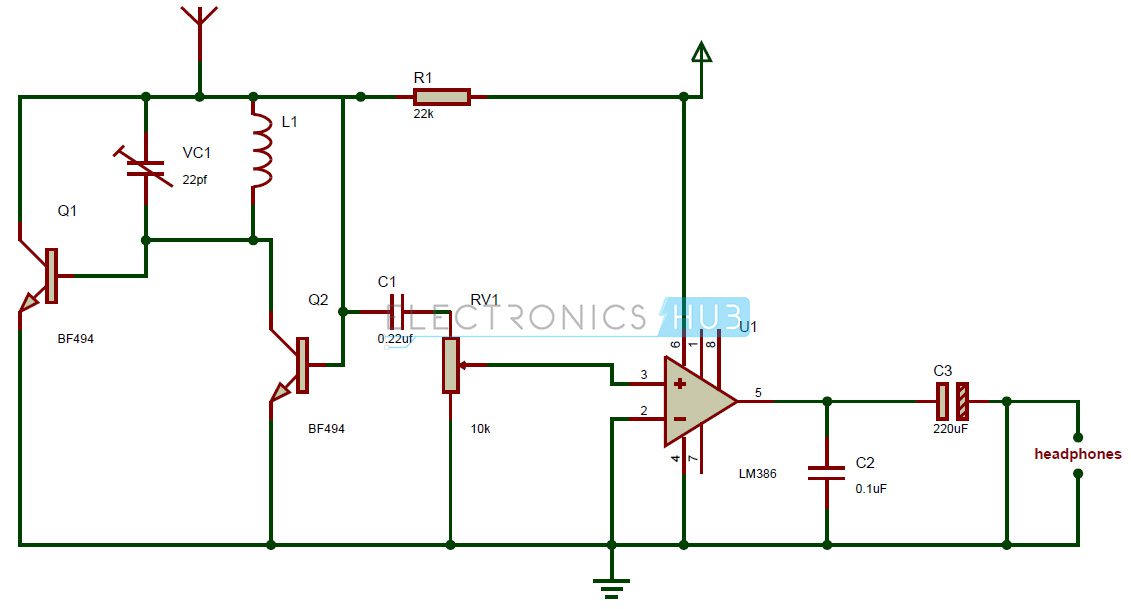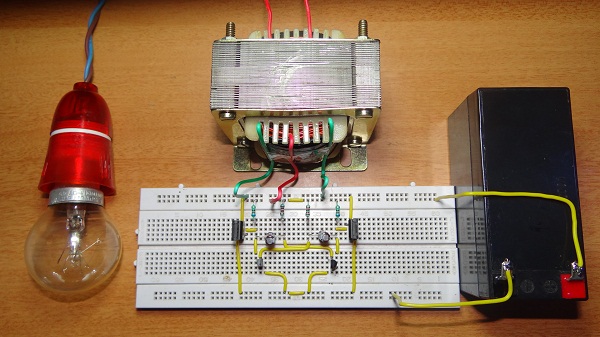Understanding how a diode works will go a long way towards uncovering the operation of a transistor. Symbols, Pins, and Construction Transistors are fundamentally threeterminal devices. In transistor as an amplifier, we have npn transistor (base in the middle and emitter and collector at the sides). The collector has electrons in majority because it is ntype. Similarly, holes are in majority in base but as it is lightly doped so it has very little amount of holes. The fieldeffect transistor (FET) is a transistor that uses an electric field to control the electrical behaviour of the device. FETs are also known as unipolar transistors since they involve singlecarriertype operation. Many different implementations of field effect transistors exist. Semiconductor Diode: How it Works Transistor A three lead semiconductor device that acts as: an electrically controlled switch, or. Introduction To Bipolar Transistors The Bipolar Junction Transistor 6 of 19 The Designers Guide Community 4 The Bipolar Junction Transistor A transistor combines two junctions and has three terminals as shown in Figure 7. bipolar transistor models are introduced, i. , EbersMoll model, smallsignal model, and charge control model. Each model has its own areas of applications. he bipolar junction transistor or BJT was invented in 1948 at Bell Telephone Laboratories, New Jersey, USA. It was the first mass produced transistor. BipolarJunction (BJT) transistors References: Barbow (Chapter 7), Hayes Horowitz (pp ), Rizzoni (Chapters 8 9) A bipolar junction transistor is formed by joining three sections of semiconductors with The MOSFET is very far the most common transistor and can be used in both analog and digital circuits. MOSFET The MOSFET works by electronically varying the width of a channel along which charge carriers flow (electrons or holes). A transistor works when the electrons and the holes start moving across the two junctions between the ntype and ptype silicon. Let's connect the transistor up to some power. Suppose we attach a small positive voltage to the base, make the emitter negatively. CHAPTER 1 How BJT Transistors Work This chapter explains how the transistor works, as well as the hybrid parameters of a transistor. The transistor is a general purpose type and and is the smallest and cheapest type you can get. The number on the transistor will change according to the country where the circuit was designed but the types we refer to are all the SAME. The component at the heart of most amplifiers is the transistor. The main elements in a transistor are semiconductors, materials with varying ability to conduct electric current. Typically, a semiconductor is made of a poor conductor, such as silicon, that has had impurities (atoms of another. The transistor I used in this video is a BC557 PNP transistor. Its one of the transistors that James Lewis recommends in his article on the best 4 transistors to keep in your parts kit. The photoresistor I used has about 10 k when its light and 1 M when its dark. A transistor is an electronic component used in a circuit to control a large amount of current or voltage with a small amount of voltage or current. This means that it can be used to amplify or switch (rectify) electrical signals or power, allowing it to be used in a wide array of electronic devices. Learn how Field Effect transistors work. Junction field effect transistor operation JFETs. Pinch off voltage and the depletion layer. P type and N type semiconductor, the reverse biased PN junction, JFET characteristics. Free downloads and links to electronics sites worldwide. The forward bias applied between the base and the emitter terminals of the transistor causes the flow of base current, I B into the base region. However its magnitude is less (usually in terms of A as V BE is just around 0. This can be considered as the movement of electrons out of the base region or the injection of holes into the base region, in equivalent sense. How Does a Transistor Work: Transistor Basics An easy to understand overview and tutorial about transistor basics and how a transistor works, with links to pages with more in depth analysis. The pnp transistor works essentially the same as the npn transistor. However, since the emitter, base, and collector in the pnp transistor are made of materials that are different from those used in the npn transistor, different current carriers flow in the pnp unit. The majority current carriers in the pnp transistor are holes. This is in contrast to the npn transistor where the majority. To understand how a PNP transistor works, simply flip the polarity or and signs. Saturation is the on mode of a transistor. A transistor in saturation mode acts like a short circuit between collector and emitter. is a three terminal device, there are basically three possible ways to connect it within an electronic circuit with one terminal being common to both the input and output. The Insulated Gate Bipolar Transistor (IGBT) is a minoritycarrier device with high input impedance and large bipolar currentcarrying capability. Many designers view IGBT as a device with MOS input characteristics and bipolar output characteristic that is Biasing of Bipolar Junction Transistor or BJT. Current Components in a Transistor. output current I C is the output current and collectorbase voltage and the emitter current I E is the input current and works as the parameters. The figure below shows the output characteristics for a pnp. For example, if the first input transistor has a current gain of 100 and the second switching transistor has a current gain of 50 then the total current gain will be 100 50 5000. So for example, if our load current from above is 200mA, then the darlington base current is only 200mA5000 40uA. The invention of the bipolar transistor in 1948 ushered in a revolution in electronics. Technical feats previously requiring relatively large, mechanically fragile, powerhungry vacuum tubes were suddenly achievable with tiny, mechanically rugged, powerthrifty specks of crystalline silicon. The three terminals of a bipolar transistor are called the emitter, base, and collector (Figure 7. A small current into the base controls a large current flow from the collector to the emitter. Introduction to Transistor Amplifiers: Concept Biasing Lecture notes: Sec. Compute circuit response to the signal develop transistor amplifier circuits F. Transistor Biasing (Bias is the state of the circuit when there is no signal) 1. Transistor as an Amplifier How do we use the transistor as an amplifier? How it works A signal, such as music from a CD player, is applied to the inpu t In many digital circuit applications, the transistor is merely u sed as a switch. The construction and terminal voltages for a bipolar NPN transistor are shown above. The voltage between the Base and Emitter ( V BE ), is positive at the Base and negative at the Emitter because for an NPN transistor, the Base terminal is always positive with respect to the Emitter. Also the Collector supply voltage is positive with respect to the Emitter ( V CE ). Transistor and their Characteristics Lesson1 Junction Transistor. 2008 Junction Transistor Unit 4 Lesson 1, Raj Kamal, 2 The Bipolar junction transistor is an active device that works as a voltagecontrolled 2008 Junction Transistor Unit 4 Lesson 1, Raj Kamal, 22 Active. The Bipolar Junction Transistor or simply BJT is a three layer, three terminal and two junction semiconductor device. Almost in many of the applications these transistors are used for two basic functions such as switching and amplification. On means current is flowing through the transistor (therefore VBE V) We usually use a DC circuit ( R 1 and R 2 in the circuit below) to achieve the biasing. Calculating the operating (DC or quiescent) point of a Common Emitter Amplifier if we have a working circuit A PNP junction transistor works on the same principle as an NPN transistor. The main flow of current in a PNP transistor is controlled by altering the number of holes rather than the number of electrons in the base. Transistor Circuits I CommonBase, DC operation. The humble transistor Q1 Emitter (E) Collector (C) Base (B) Transistor basics Emitter to base junction is forward biased (normally) Collector to base junction is reverse biased (normally) Transistors are current operated devices, so The Transistor Amplifier Home Save P1 as: . 2MB) See: 1 100 Transistor Circuits 101 200 Transistor Circuits P1 P2 P3 test A simple explanation of how a transistor works in a circuit, and how to After the transistor was invented in 1947 one of the first available consumer technologies it was applied to was radios, so they could be made portable and higher quality. TRANSISTOR theory may be learned more readily than otherwise by first having an understanding of a twoelement device, or diode. Therefore, this manual presents first the theory of diodes, as introduction to the theory of the threeelement transistors. Introduction So far in EE100 you have seen analog circuits. You started with simple resistive circuits, Next we will talk about diodes, followed by the bipolar junction transistor. In the case of both devices, we will talk about the nonlinear models, load line analysis and applications. junction transistor (or BJT) works. Although nearly all modern digital ICs use a completely Although nearly all modern digital ICs use a completely different type of transistor, the oxide metal semiconductor field effect transistor ( MOSFET ). The transistor characteristics are useful in amplifier design as well as understanding how transistors operate. The data below were collected for the example of a npn 2N transistor using the circuit Transistor is a semiconductor device used for switching and amplification of weak signals. This article explains how a transistor work and the working of transistor as a switch. In the late 1920's, Polish American physicist Julius Lilienfeld filed patents for a threeelectrode device made from copper sulfide. There's no evidence that he actually created the component, but his research helped develop what today is a field effect transistor, the building block of silicon chips. A transistor is a semiconductor device used to amplify or switch electronic signals and electrical power. It is composed of semiconductor material usually with at. MOSFET transistors are the most popular types of semiconductors today. MOSFETS have, in effect, replaced bipolar transistors particularly in harsh electrical. How Transistors Work A Simple Explanation. May 28, [PDF a mini eBook with examples that will teach you how the basic components of electronics work. The transistor works because of something called a semiconducting material. A current flowing from the base to the emitter opens the flow of current. The most commonly used bipolar logic family is transistortransistor logic. Actually, there are many different TTL families, with a range of speed, power consumption, and other characteristics. Transistor is a semiconductor device having three layers, three terminals and two junctions. Since we have only two types of semiconductors i. the ptype and ntype, there are two types of transistors: they are NPN transistor and PNP transistor. The operation of a bipolar junction transistor is relatively straightforward when explained in qualitative terms. Seeing how a transistor works can be assist in the design of circuits and a general understanding of the technology of transistors themselves and of semiconductor technology in general. In a elde ect transistor (FET), the width of a conducting channel in a semiconductor and, therefore, its currentcarrying capability, is varied by the application ofan. A transistor is a semiconductor device used to amplify and switch electronic signals. It is made of a solid piece of semiconductor material, with at least three terminals for connection to an. current through transistor es e How does a transistor work? Different designs and alphabet soup of names. We will consider the nchannel MOSFET Made of N and Pdoped semiconductors Consists of 2 diodes (PN junctions) backtoback Depletion region controls current flow.











